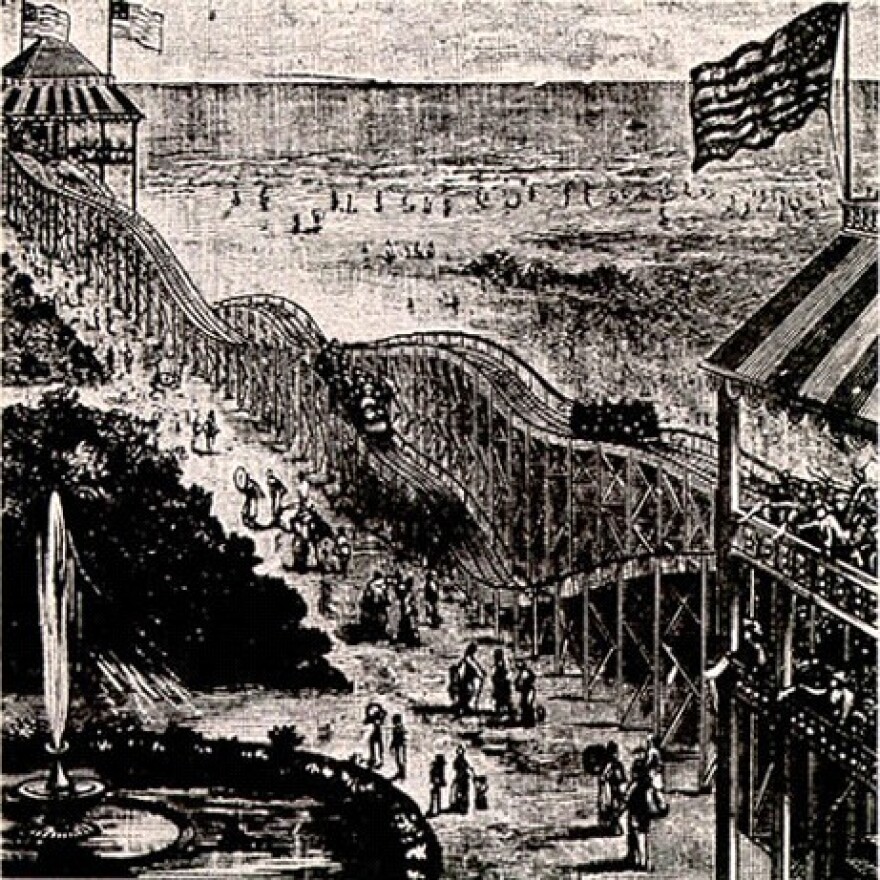Roller coasters are the workhorse of the modern theme park, but their rise to popularity has been long and strange.
Its precursor could be found outside of St. Petersburg in the 1800s. Massive ice slides called Russian Mountains were reinforced with wood, plunging up to seventy feet at sharp angles.
We can still see this origin in the words for “rollercoaster” in romance languages like Spanish— La Montaña Rusa—and other variations in French, Italian and Portuguese. Strangely, the Russian term literally translates as “American Mountains.”
But the leap from ice slides to wheeled carts can be partially credited to Catherine the Great of Russia, who commissioned a permanent ride for her palace in 1784.
Now to the United States, a century later, where railways were booming. A man named LaMarcus Thompson saw an opportunity as people paid to ride coal transports down hillsides.

In 1884, Thompson opened a wooden-framed Switchback Railway ride on Coney Island. It was gravity propelled, reaching a whopping six miles an hour, and had to be manually towed to the top for the next ride.
Coney Island was the stage for another innovation: The Flip Flap Railway, the first to spin passengers upside down in a true circular loop. But it was an extremely rough ride, spraining necks and knocking some unconscious as it pulled 12 G’s. To put that in perspective, today’s roughest roller coasters cap out at half that force.
Today’s safer loops and corkscrews derive from the Disneyland’s 1959 innovation of the tubular steel tracks, which are still used today.



